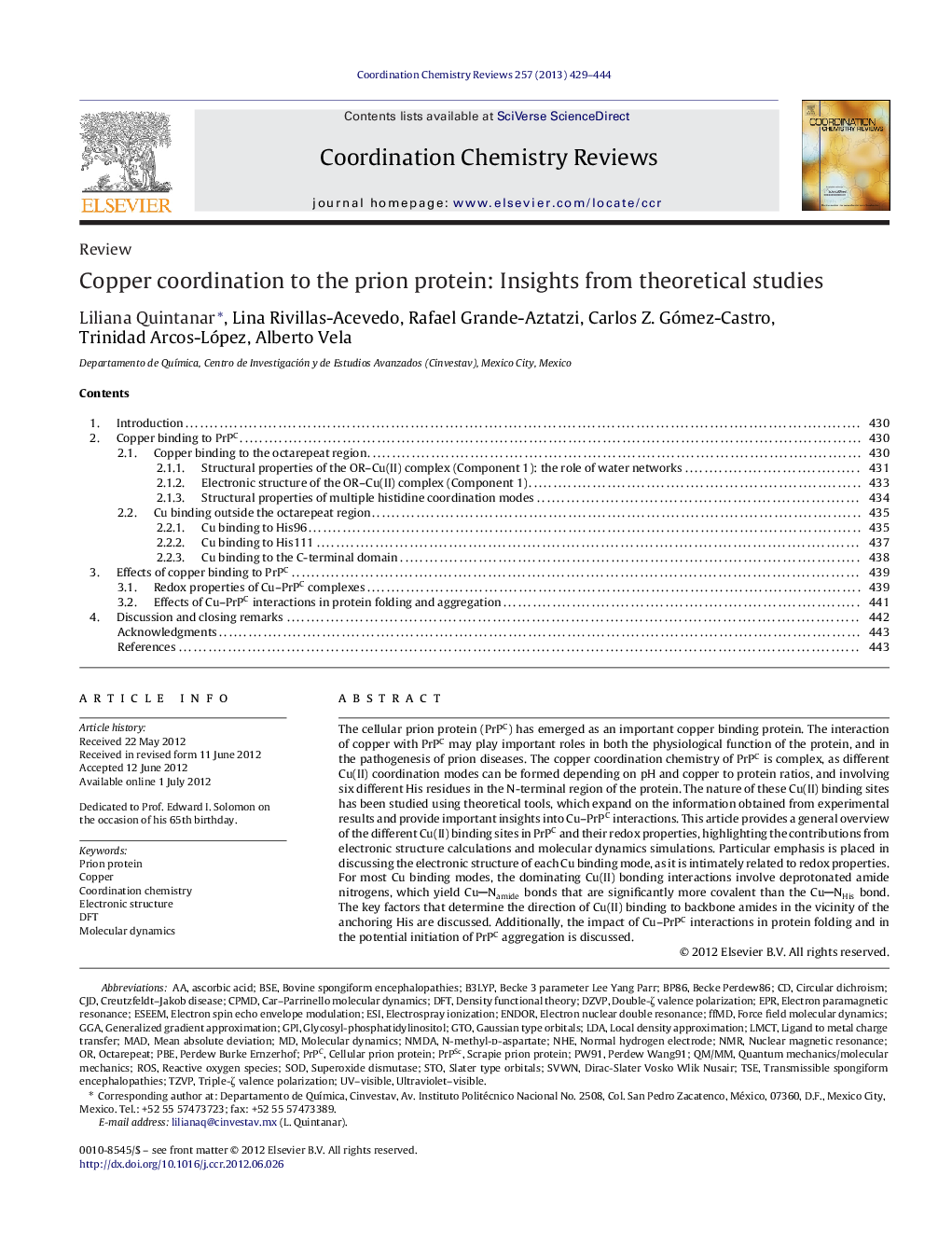| Article ID | Journal | Published Year | Pages | File Type |
|---|---|---|---|---|
| 10569606 | Coordination Chemistry Reviews | 2013 | 16 Pages |
Abstract
⺠Theoretical studies yield important insights into the nature of Cu-PrPC interactions. ⺠The dominant Cu(II) bonding interactions involve deprotonated amides. ⺠The electronic structure of each Cu binding mode influences its redox properties. ⺠Key factors determining the direction of Cu binding to the backbone are discussed. ⺠The potential impact of Cu-PrPC interactions in protein folding is discussed.
Keywords
PBECJDTSEGPiN-methyl-d-aspartateNMDAMADB3LYPENDORLMCTCar–Parrinello molecular dynamicsGTOPW91CPMDESEEMPrPcNHEBP86BSEPrPscscrapie prion proteinESISlater type orbitalsSTOnuclear magnetic resonanceGGADFTQM/MMROSUV–visibleAscorbic acidUltraviolet–visiblenormal hydrogen electrodeLigand to metal charge transferTransmissible spongiform encephalopathiesCreutzfeldt–Jakob diseaseLDANMREPRElectron paramagnetic resonanceGeneralized gradient approximationLocal density approximationMolecular dynamicsElectron nuclear double resonancecircular dichroismelectronic structureSODSuperoxide dismutaseCoordination chemistryElectron spin echo envelope modulationCopperQuantum mechanics/molecular mechanicsMean absolute deviationDensity functional theoryPrion proteincellular prion proteinglycosyl-phosphatidylinositolReactive oxygen specieselectrospray ionization
Related Topics
Physical Sciences and Engineering
Chemistry
Inorganic Chemistry
Authors
Liliana Quintanar, Lina Rivillas-Acevedo, Rafael Grande-Aztatzi, Carlos Z. Gómez-Castro, Trinidad Arcos-López, Alberto Vela,
